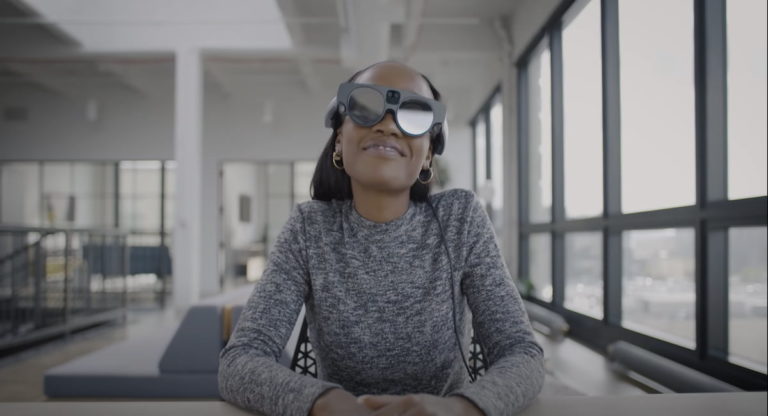
Advances in tech often present new learning opportunities for younger generations. And that’s currently the case with Generation Z. Since many of them are entering adulthood, they’re looking for a way to learn essential life skills. Could AR help them achieve that end? Here are a few ways we see that happening.
1. In Their Free Time
People often describe Generation Z as digital natives. They grew up with technology, so using augmented reality (AR) to learn new things comes naturally to them. It’s becoming more accessible due to its increased affordability, so more can use it to learn essential life skills.
They could take advantage of a wealth of practical applications. In their free time, they could work on improving whatever they want. A headset offers hands-on solutions to the abstract nature of some life skills. For example, they could use augmented overlays to learn how to fix an engine or speak publicly.
Virtual reality requires a safe, enclosed environment, while AR allows for a range of motion and activity. They’re much more grounded when digital enhancements support their environment. It lets them spend more time working on their skills rather than learning about them.
2. In the Classroom
Even though AR learning is a relatively new concept, it’s present in many high schools and colleges because of its versatility. Plus, it’s often beneficial for academic performance. AR devices offer real-time responses to personalize interactions, improving students’ success rates more effectively than traditional technology. Most of Generation Z is still in high school or college, so they could take advantage of it. Its extensive functions can enhance most learning experiences, ranging from science to arts.
Experts believe teachers could use augmented reality to educate middle schoolers on essential life skills. The youngest people in Generation Z are around 11 years old, so it would be the perfect time to introduce it. Plus, they’ll likely adapt to technological advances more quickly if they start at a younger age.
Schools often don’t focus on personal finance, home economics, or interpersonal skills because they need unique setups. For instance, teaching a cooking class requires fresh ingredients, cookware, and kitchen appliances. AR can overcome conventional limitations and provide Generation Z with the necessary tools. They can simply use a headset to immerse themselves in a new learning experience.
3. At Home
The youngest people in Generation Z are entering middle school, while the oldest have been out of college for roughly five years. Since AR is accessible to all age groups, it can potentially enhance their learning experiences. Their creativity is the only thing that may limit them.
They typically crave to know how to successfully and consistently complete standard daily tasks. Most haven’t gained any tangible life skills from their conventional education. Integrating technological solutions into self-care is necessary for ensuring the best outcomes for Generation Z. This is where AR comes into play.
An augmented environment grounds them in reality while they learn, letting them use their new knowledge to do hands-on tasks. For example, they could use a virtual assistant and 3-D overlays to understand how to prepare various meals. As the lesson progressed, they could safely chop vegetables and interact with their appliances.
People must pay full attention to completely absorb new knowledge, which is why this learning style may be revolutionary for this generation. Developing life skills requires experience, which they can simulate in a low-risk environment. Plus, they can immediately apply their teachings in real time.
4. In the Workplace
One survey of Generation Z found they mostly hoped to gain essential life skills from early professional experience because they didn’t learn them in school. They considered communication, interpersonal, and problem-solving the most valuable. While using an AR headset in the workplace may seem unconventional, it may become the norm as more of these digital natives enter the workforce.
Digital overlays are discreet, so people can use them as support to get their work done. Also, they can help build soft skills to help develop personal and professional lives. For example, speech prompts or conversational tips could improve their communication. Alternatively, charts and graphs of relevant job data could help them collaborate with their team members.
They could use AR to increase their interpersonal and critical-thinking skills in the workplace. It would benefit their professional life and translate directly into their daily interactions with others. They remain grounded in reality when augmenting it, a practical approach for a technologically-inclined generation.
Using AR to Teach Gen Z
The best things about AR are its practicality and versatility. Generation Z can use it in whatever situation they’d like because it adapts to their current environment. Plus, overlays are incredibly useful for hands-on, real-time learning. This technology may be an essential tool for teaching them standard life skills.
 April Miller is a senior writer at ReHack Magazine and editorial contributor at AR Insider. She specializes in VR/AR, IoT, and business technology. See her work here and follow her @rehackmagazine.
April Miller is a senior writer at ReHack Magazine and editorial contributor at AR Insider. She specializes in VR/AR, IoT, and business technology. See her work here and follow her @rehackmagazine.






